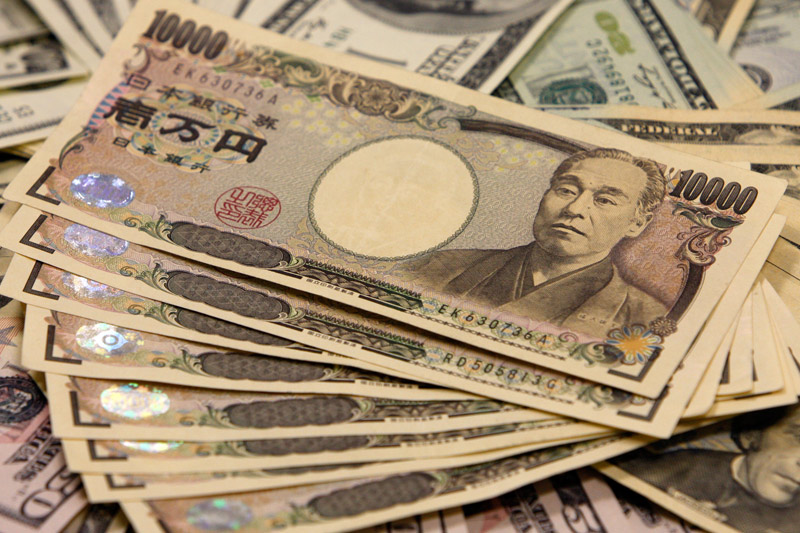Investing.com - The yen remained weaker in Asia on Wednesday with mixed regional data and after hints on possible next steps by policymakers in the country's long-running battle with deflation.
In China, March trade data showed a trade balance surplus of $29.86 billion, narrower than the $30.85 billion seen. Exports however jumped 11.5%, handily beating the 2.5% year-on-year gain seen, while imports fell 13.8%, more than the 10.2% decline expected.
USD/JPY changed hands at 108.90, up 0.89%, while AUD/USD traded at 0.7709, surging 1.49%.
Also driving sentiment, Bank of Japan board member Yutaka Harada on Wednesday said the central bank should "without hesitation" take additional easy policy if risks facing Japan's economy materialized.
"Japan's economy is facing risks that would worsen its economy," Harada said in a speech to business leaders in Shimonoseki, Japan.
"If they materialized, the virtuous cycle from income to spending would have ceased to operate and the labor market would worsen and then the underlying trend of prices would deteriorate."
Earlier in Japan, the corporate goods price index for March fell 3.8%, more than the expected 3.5% fall seen year-on-year.
In Australia, the Westpac consumer sentiment survey for April showed a drop of 4.0%, on the back of a fall of 2.2% the previous month. The fall in consumer sentiment is surprising given the Reserve Bank's outlook for growth to be supported by a rise in household consumption.
"The Reserve Bank board next meets May 3. Despite this disappointing read on sentiment we expect the board will keep rates on hold for
another month. We retain our call that rates will remain on hold for the remainder of 2016," Westpac chief economist Bill Evans said.
The U.S. dollar index, which measures the greenback’s strength against a trade-weighted basket of six major currencies, was up 0.16% to 94.12.
Overnight, the dollar rose against the other major currencies on Tuesday, after the International Monetary Fund cut its global growth forecast for the fourth time in the past year, boosting demand for safer assets.
The IMF forecast that the global economy would grow at 3.2% in 2016 compared to its previous forecast of 3.4% in January.
The IMF also said that weaker growth could leave the global economy more vulnerable to shocks such as currency depreciations or worsening geopolitical conflicts.
But the greenback remained under pressure as recent dovish comments by Federal Reserve Chair Janet Yellen prompted investors to push back expectations on the timing of the next interest rate increase.
Lower interest rates make the dollar less attractive to yield seeking investors.
Data on Tuesday showed that U.S. import prices rose by 0.2% in March, disappointing expectations for an increase of 1.0%. Import prices fell 0.4% in February, whose figure was revised from a previously estimated 0.3% downtick.
Meanwhile, Japan’s chief cabinet secretary said Monday the government was closely monitoring the foreign exchange market and added that the moves in the yen were one-sided and speculative.
But investors stuck to the view that Japan would refrain from any direct action to stem the yen’s gains until at least after this week's G20 meetings in Washington.
